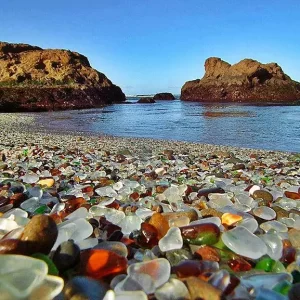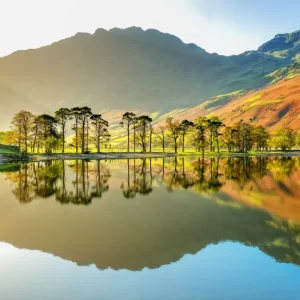Tucked away in western Kyoto, Sagano Bamboo Forest is often described as one of the most enchanting walks in the world. This dreamlike path stretches approximately 400 meters, weaving from the Nonomiya Shrine, past the northern side of Tenryu-ji Temple, and toward the famed Okochi-Sanso Villa. If you’re ever in Japan, this magical forest walk should be high on your bucket list.
Sagano Bamboo Grove has earned its place on countless “must-visit” lists for a reason. With its serene atmosphere and emerald-green canopy, this natural wonder offers visitors a deeply calming escape from the bustling outside world.
Located in Arashiyama District, on the western outskirts of Kyoto, the bamboo forest is mesmerizing year-round—but especially stunning in summer. Sunlight filters through the tall stalks, casting dancing patterns of light on the winding trails. The forest feels like something out of a dream—tranquil, mysterious, and utterly beautiful.
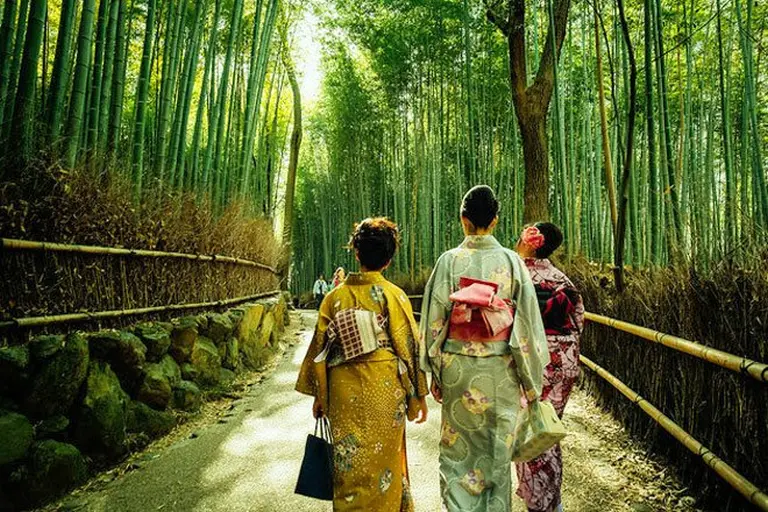
>> The Yonaguni Underwater Pyramid: Mystery of Japan’s Submerged Monument
As you step inside the bamboo grove, you’re immediately wrapped in silence, broken only by the soft rustle of leaves and the creaking sway of bamboo stalks. These soothing sounds, considered sacred by many, have even been included in Japan’s “100 Soundscapes to Preserve”, a national list recognizing natural sounds that represent the country’s heritage.
Covering an area of around 16 square kilometers, Sagano is more than just a scenic stroll—it’s a symphony of nature. The symmetrical rows of thousands of towering green bamboo create an almost hypnotic effect, drawing you deeper into the forest’s embrace.
The forest reaches peak beauty in early autumn, when the climate is cool, the crowds have thinned, and the colors are vivid. If you’re planning a visit, early mornings or late evenings are ideal times for a more peaceful experience. Try to avoid weekends, especially in summer, when tourist numbers surge.
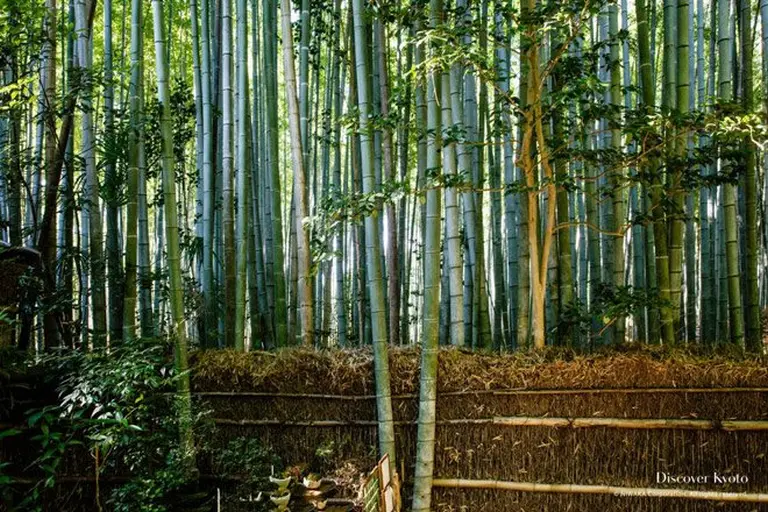
At the northern entrance to the forest, you’ll find Tenryu-ji Temple, a UNESCO World Heritage Site and one of Kyoto’s Five Great Zen Temples. In Japanese culture, bamboo is believed to ward off evil spirits, which is why many temples and shrines are built near bamboo forests. Tenryu-ji’s Zen garden is among the finest in the country, and the temple itself serves as the headquarters of the Rinzai School of Zen Buddhism.
One of the most remarkable things about the Sagano Bamboo Grove is that it’s open 24/7 and completely free to enter. This accessibility makes it a popular day-trip destination for visitors staying in Kyoto’s historic districts.
For many travelers, Sagano offers not just a stroll through nature, but a moment of reflection—an opportunity to disconnect from the modern world and reconnect with something timeless. Whether it’s the whisper of the wind, the filtered sunlight, or the rhythmic rustle of bamboo leaves, every step feels like a scene from a cinematic masterpiece.
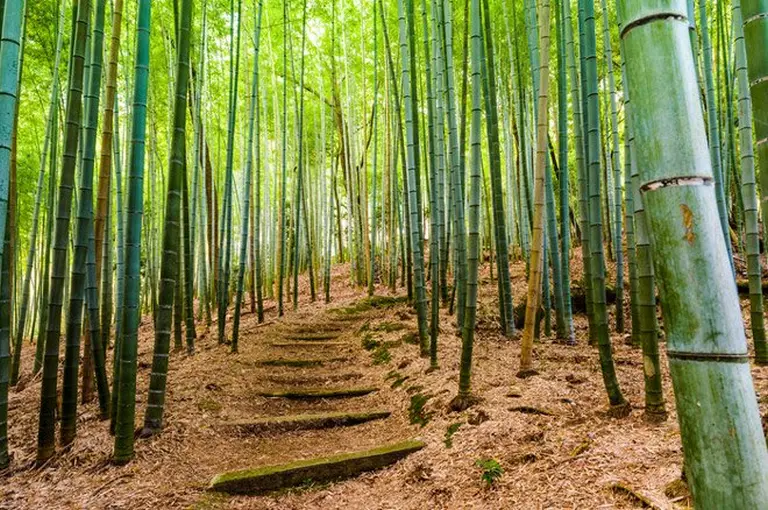
>> The 3,000-year-old sacred tree at Takeo Shrine, Japan
Travel Tips for Visiting Sagano Bamboo Grove
1. Best Time to Visit:
- Early Morning (Before 9 AM) or Late Afternoon (After 5 PM) are the best times to visit. These hours offer cooler temperatures, fewer crowds, and the best lighting for photography.
- Autumn (late September to November) is the most beautiful season for visiting—cool air, golden light, and vivid scenery.
- Avoid weekends and national holidays if you prefer a more peaceful experience.
2. How to Get There:
- Take the JR Sagano Line from Kyoto Station to Saga-Arashiyama Station (about 15–20 minutes).
- From there, it’s a 10-minute walk to the forest entrance.
- Alternatively, hop on the Keifuku Randen Tram Line to Arashiyama Station, then walk.
3. What to Wear:
- Wear comfortable walking shoes—the path is mostly flat but can get slippery during rainy days.
- Bring a light jacket or umbrella in spring or autumn, as the weather can change quickly.
- Avoid flashy colors or noisy accessories if you want to enjoy the peaceful atmosphere—and take beautiful photos.
4. Photography Tips:
- Use a wide-angle lens to capture the towering bamboo stalks.
- Mornings are best for soft, diffused light. Golden hour in late afternoon gives a magical glow.
- Respect signs—no tripods during peak hours to avoid blocking the paths.
5. Combine with Other Attractions:
- Visit the Tenryu-ji Temple right next to the bamboo grove—it has one of Japan’s most famous Zen gardens.
- Take a scenic ride on the Sagano Romantic Train or a boat cruise along the Hozugawa River.
Explore Arashiyama Monkey Park Iwatayama or cross the famous Togetsukyo Bridge nearby.
6. Food and Souvenirs:
- Enjoy traditional Kyoto sweets, matcha ice cream, and soba noodles at local cafés around Arashiyama.
- Don’t miss the many small shops selling bamboo crafts, handmade fans, and souvenirs unique to Kyoto.
7. Accessibility:
The path through the bamboo forest is wheelchair-friendly, but some nearby temple paths may be uneven or involve stairs.
8. Respect the Space:
- Keep voices low to preserve the serene atmosphere.
- Don’t touch or lean on the bamboo stalks.
- Take your trash with you—this area is pristine thanks to responsible visitors!
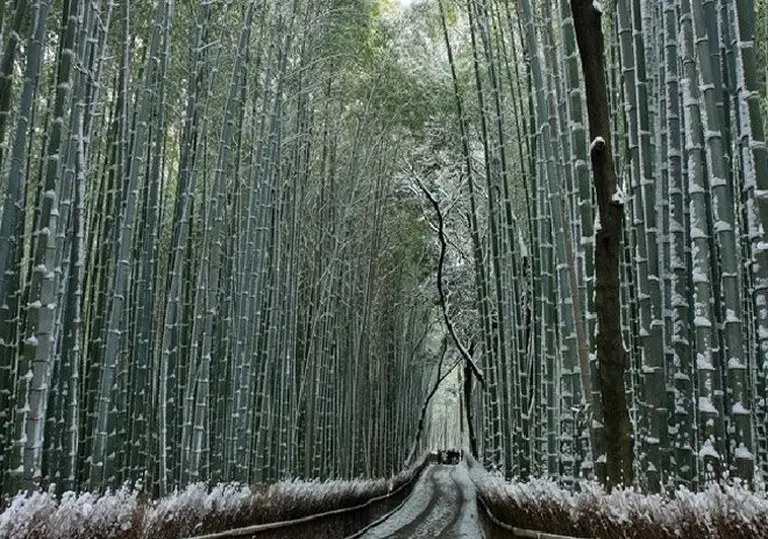
>> Masuda Rock Ship: A Millennia-Old Mystery Hidden in Japan’s Hills
Visiting the Sagano Bamboo Grove is more than just a walk through nature — it’s a step into a living dream. The whispering rustle of the bamboo leaves, the dappled sunlight dancing through the towering stalks, and the timeless atmosphere make this place feel like a bridge between the natural world and the spiritual. Whether you’re a photographer chasing perfect light, a traveler seeking peace, or simply someone who wants to pause and breathe, Sagano offers an unforgettable experience that speaks to the soul.
As you leave the grove, don’t be surprised if you find yourself quieter, more centered — as if the forest itself has shared a piece of its serenity with you. In a world that often moves too fast, Sagano stands still — waiting to welcome every traveler with open arms and a whisper of wind through emerald leaves.
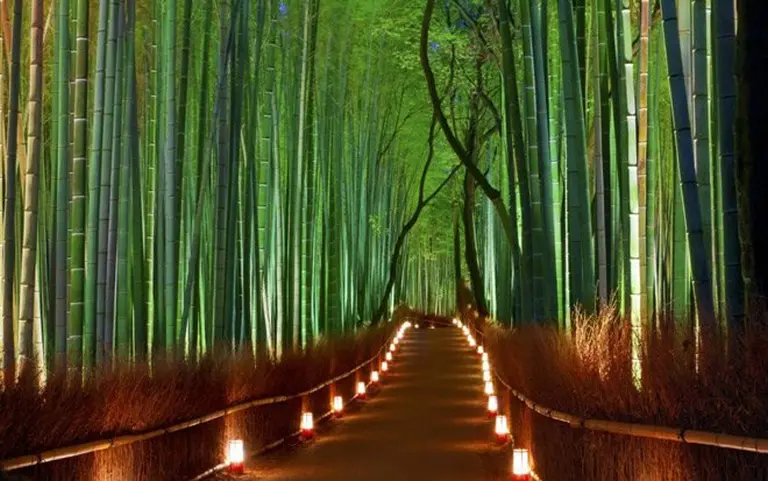
So if you ever find yourself in Kyoto, take the time to wander beneath the bamboo canopy. It may just become the moment you remember most from your journey through Japan.
>> Self-Mummification: The sacred journey beyond death you’ve never heard of



